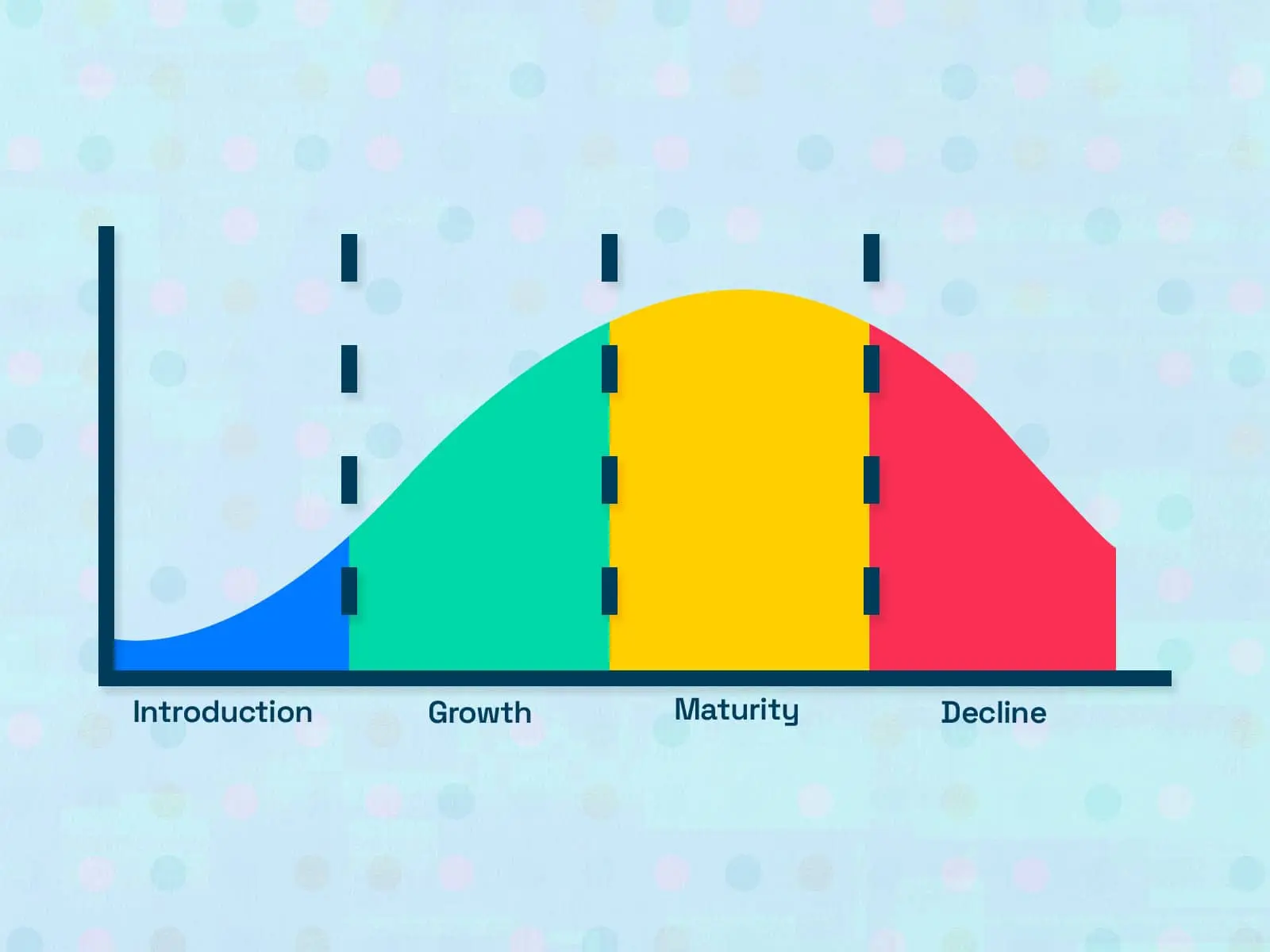The Phasing Out Dilemma: A Study of Frustrated Consumers
Product discontinuation frustrates consumers, highlighting the need for better communication and alternatives from companies.


Who Took Your Favorite Product off the Market?
Understanding Customer Frustration
Customer frustration is a common challenge faced by businesses, especially when dealing with products that are no longer available. It's crucial to address this frustration effectively to maintain customer retention and meet customer expectations. Balance the pursuit of perfection with strategic planning to phase out products smoothly.
When it comes to beloved products, companies often find that their success lies in genuine consumer appreciation and loyalty. These products naturally attract customers because they meet or exceed expectations, offering real value and satisfaction.
On the other hand, if you have to bribe people to use your product, it might be time to reevaluate its appeal and effectiveness. This approach can indicate underlying issues with the product's design or functionality that need addressing to foster authentic customer engagement and long-term success. Perhaps a new, more innovative, marketing campaign is all that's needed?
How to Reply to a Frustrated Customer Email
When you receive a complaint, knowing how to reply to a frustrated customer email is essential. Use clear, empathetic language and provide solutions to resolve the issue.
Apologize for the Inconvenience with Empathy
When you need to apologize for the inconvenience, do so sincerely. Customers interact best with brands that acknowledge their concerns and strive to resolve them effectively. Use email templates tailored for problem-solving to maintain a professional tone.
Here's a sample email for frustrated customer interactions:
---
Subject: We're Sorry This Product is No Longer Available
Dear [Customer Name],
We sincerely apologize for the inconvenience caused by the unavailability of [Product Name]. This product is no longer available due to [reason]. We understand this may cause frustration, and we're here to help you find an alternative solution.
Please let us know how we can assist you further.
Best regards,
[Your Name]
Customer Support Team
---
Generate a Product No Longer Available Photo
To communicate effectively with your customers, consider creating visuals. A "product no longer available" photo can quickly inform customers of changes in your product line.

Addressing Consumer Frustration
Consumer frustration often arises when products or services disappear unexpectedly. To mitigate this, ensure your product management and product design teams focus on user experiences and real-time updates. This proactive approach can help resolve the issue before it escalates.
Product design teams play a crucial role in mitigating frustration. They should focus on creating intuitive interfaces that make it easy for users to find information about product updates or endings. Implementing in-app notifications or prominent website banners can help keep customers informed about upcoming changes.
Real-time updates are essential in today's fast-paced digital environment. Companies should leverage multiple communication channels such as email, social media, and mobile notifications to reach customers promptly. This approach ensures that users are not caught off guard by sudden product changes.
Case Study 1: Apple's iPod Discontinuation
Apple handled the ending of its iconic iPod line effectively. They gradually phased out different models over several years, giving customers ample time to adjust. Apple also ensured that the iPod's key features were integrated into other products like the iPhone, providing a clear alternative for users.
Case Study 2: Google Reader Shutdown
Google's abrupt announcement of shutting down Google Reader in 2013 led to significant user backlash. The company gave users only three months' notice, which was insufficient for many to find and transition to alternatives.
This case highlights the importance of providing adequate lead time and migration options when popular services are phased out.
Case Study 3: Adobe's Transition to Creative Cloud
Adobe successfully transitioned from selling packaged software to a subscription-based model. They communicated the change well in advance, offered trials of the new service, and provided extensive resources to help users adapt. This proactive approach helped minimize frustration during a major shift in their product offering.
By focusing on user experience and maintaining open lines of communication, companies can significantly reduce consumer frustration when products or services are ended. This approach not only preserves customer goodwill but also provides valuable insights for future product development and lifecycle management.
The Role of Product Strategy in Customer Retention
A strong product strategy is vital for long-term success. By analyzing customer feedback and engaging with team members, companies can refine their product development process. Famous companies that use product analysis for new product development often succeed because they prioritize the relentless pursuit of perfection.

The Rise and Fall of Twinlab Stress Formula B50 and GNC Mood Formula
In the bustling supplement market of the early 2000s, two products stood out: Twinlab Stress Formula B50 and GNC Mood Formula. Both were crafted with the same potent blend of ingredients, yet they followed different paths in pricing and packaging.
Twinlab's Competitive Edge
Twinlab Stress Formula B50 offered consumers a compelling value proposition. For $20, buyers received a bottle containing 200 capsules. This formula was packed with essential vitamins like Vitamin C, B1, B2, B6, and B12, each delivering a robust 50mg dose.
Additionally, it included calming botanicals such as chamomile flower powder, rhodiola rosea root extract, L-theanine, passion flower herb, and linden flower extract. This combination aimed to support stress relief and mood enhancement effectively.
GNC's Premium Approach
In contrast, GNC Mood Formula took a premium pricing strategy. At $16 for 60 tablets, it positioned itself as a high-end option within the same category. Despite having identical ingredients to Twinlab's product, GNC leveraged its brand reputation and retail presence to attract consumers seeking a more exclusive supplement experience.
The Ingredients That Made Them Stand Out
Both products featured a powerful blend of vitamins and herbs designed to combat stress and improve mood, which are the basis for Gastrorejuvenator/Stress/Mood Formula:
- Vitamin C (as ascorbic acid) 60mg: Boosts immunity and reduces stress.
- Thiamin (Vitamin B-1) 50mg: Supports energy production.
- Riboflavin (Vitamin B2) 50mg: Aids in energy release from food.
- Niacin (as niacinamide) 50mg: Promotes brain health.
- Vitamin B-6 (as pyridoxine hydrochloride) 50mg: Enhances neurotransmitter function.
- Vitamin B-12 (as cyanocobalamin) 50mg: Supports nerve health.
The herbal components included:
- Chamomile Flower Powder 100mg: Known for its calming effects.
- Rhodiola Rosea Root Extract 100mg: Helps reduce fatigue.
- L-Theanine 50mg: Promotes relaxation without drowsiness.
- Passion Flower Herb 50mg: Eases anxiety and improves sleep quality.
- Linden Flower Extract (Tilia Europaea) 50mg: Traditionally used for its soothing properties.
Lessons in Product Strategy
Despite their promising formulations, both Twinlab Stress Formula B50 and GNC Mood Formula were eventually taken off the market. This highlights a critical lesson in product strategy: even well-formulated products can falter without the right market positioning and consumer engagement.
The Importance of Market Positioning
For any product to succeed, understanding its place in the market is crucial. Twinlab focused on offering value through quantity, while GNC emphasized exclusivity through pricing. However, both approaches ultimately faced challenges that led to their removal from the market shelves.
Conclusion: Navigating the Supplement Market
The stories of Twinlab Stress Formula B50 and GNC Mood Formula serve as reminders of the importance of strategic positioning and consumer perception in product management. In an industry driven by innovation and competition, aligning product offerings with consumer needs is essential for long-term success.
Leveraging Crowdsourcing for Product Ideas
A firm that uses crowdsourcing will generate product ideas that resonate with consumers. This approach not only enhances the product use experience but also taps into raw materials used in production formula innovations.
Crowdsourcing has become a powerful tool for firms to generate product ideas that truly resonate with consumers. By tapping into the collective wisdom and creativity of a large group of people, companies can develop products that better meet customer needs and preferences. This approach not only enhances the product use experience but also opens up possibilities for innovations in production formulas and raw materials.
Let's explore this concept further with some real-world examples:
Enhancing Product Use Experience
When firms use crowdsourcing, they gain direct insights into what consumers actually want. This leads to products that are more intuitive, functional, and enjoyable to use.
Case Study: LEGO Ideas
LEGO's crowdsourcing platform, LEGO Ideas, allows fans to submit their own designs for new LEGO sets. The community votes on these ideas, and the most popular ones are considered for production. This approach has led to the creation of unique sets that resonate strongly with LEGO enthusiasts. For example, the "Women of NASA" set, which features miniature figures of pioneering women in space science, was born from a fan's idea on this platform. The set not only celebrated women in STEM but also provided an educational play experience that many parents and children appreciated.
Innovating Production Formulas
Crowdsourcing can also lead to breakthroughs in how products are made, including the raw materials used in production formulas.
Case Study: Unilever's Open Innovation Platform
Unilever uses its Open Innovation platform to crowdsource solutions for various challenges, including sustainable packaging and new product formulations. In one instance, they sought ideas for plastic-free shampoo formulas. This led to the development of concentrated shampoo bars that use less water and packaging, appealing to environmentally conscious consumers while also innovating the production process.
Tapping into Raw Material Innovations
By engaging a diverse crowd, companies can discover novel raw materials or new applications for existing ones, leading to more sustainable or effective products.
Case Study: Heineken's Ideas Brewery
Heineken launched its Ideas Brewery initiative to crowdsource sustainable packaging ideas. One winning concept proposed using spent grain from the brewing process to create beer bottles. This innovative approach not only reduced waste but also introduced a new, biodegradable packaging material derived from the brewing process itself.
Resonating with Consumer Values
Crowdsourcing allows firms to align their products with consumer values and preferences, creating a stronger emotional connection with their target audience.
Case Study: My Starbucks Idea
Starbucks' "My Starbucks Idea" platform allowed customers to suggest and vote on new product ideas. This led to the introduction of popular items like cake pops and skinny beverages, which aligned with consumer desires for indulgent treats and healthier options. The platform also resulted in operational improvements like free Wi-Fi in stores, enhancing the overall customer experience.
By leveraging crowdsourcing, these companies not only created products that resonated with consumers but also tapped into innovative ideas for production processes and raw materials. This approach allows firms to stay ahead of market trends, reduce development costs, and create products that consumers truly want and need. As a result, crowdsourcing has become an invaluable tool for companies looking to innovate and maintain a competitive edge in today's fast-paced market.
The Importance of Product Management and Development
Product management is crucial in ensuring that products or services meet market demands. By involving team members in the product development process, companies can achieve a wide range of successful outcomes.
Conclusion: The Relentless Pursuit of Perfection
In the relentless pursuit of perfection, businesses must balance customer expectations with innovative solutions. Whether through crowdsourcing or strategic analysis, staying attuned to consumer needs ensures long-term success and minimizes customer frustration.
https://youtu.be/1vZGmsl1fqQ?si=YXKvS6VU0Bu7vCtt
Join Our Mailing List
We're excited about the Gastrorejuvenator Crowdfunding Campaign, and Invite You to Become a Part of It! Join Now
Need a natural cure for stress? Take a listen:
Potpourri Of Sounds Volume 1 | Clark Clifford (bandcamp.com)


